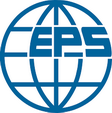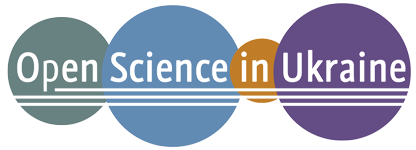The effect of clustering of Si nanowires produced by the metal-assisted chemical etching method on their anti-reflecting properties
DOI:
https://doi.org/10.15330/pcss.25.4.903-909Keywords:
silicon nanowires, wetting properties, super hydrophobic surfaces, metal-assisted chemical etchingAbstract
Silicon nanowires are valuable for their compatibility with silicon technology and unique properties. Using metal-assisted chemical etching, we produced silicon nanowires and studied the effects of clustering, roughness, and length on wetting. Hydrophobicity depends on silicon nanowires clustering, which is influenced by length. The highest contact angle (~95º) was for 8.5-μm long nanowires. Below 8 μm, minimal clustering promotes wetting, while longer nanowires form larger clusters and hydrophobic surfaces. The Cassie–Baxter model applies initially, transitioning to the Wenzel model over time. Adjusting surface morphology can improve anti-reflective properties. Metal-assisted chemical etching offers control over the silicon nanowires’ length and wettability, benefiting silicon-based device development.
References
G. Farid, R. Amade-Rovira, Y. Ma, S. Chaitoglou, R. Ospina, E. Bertran-Serra, Revolutionizing energy storage: Silicon nanowires (SiNWs) crafted through metal-assisted chemical etching, Arabian Journal of Chemistry, 17, 105631 (2024); https://doi.org/10.1016/j.arabjc.2024.105631.
Y. Linevych, V. Koval, M. Dusheіko, M. Lakyda, Application of silicon nanowires in sensors of temperature, light and humidity, Materials Science in Semiconductor Processing, 184, 108773 (2024); https://doi.org/10.1016/j.mssp.2024.108773.
A.-H. Chiou, H.-Y. Liao, J.-L. Wei, Effects of TiO2 thin films on silicon nanowire arrays in heterojunction solar cells, Surface and Coatings Technology, 476, 130248 (2024); https://doi.org/10.1016/j.surfcoat.2023.130248.
H.-J. Li, C. Chen, X. Zhang, C. Huang, Z. Chen, T. Wang, D. Wang, L. Xu, J. Fan, Dual-functional silicon nanowire arrays-based photocatalytic fuel cell for solar-to-electricity conversion and self-powered glucose detection, Journal of Power Sources, 603, 234432 (2024); https://doi.org/10.1016/j.jpowsour.2024.234432.
P. Nath, N. Bano, D. Sarkar, Impact of electroplating salt (AgNO3) concentration on the morphological, optical, electrical and thermoelectric properties of silver-assisted electrochemically etched silicon nanowires (SINWs), Current Applied Physics, 55, 53 (2023); https://doi.org/10.1016/j.cap.2023.09.002.
S.P. Muduli, P. Kale, Enhancing Si-nanowire solar cell performance through fabrication and annealing optimization, Journal of Materials Science: Materials in Electronics, 35, 1909 (2024); https://doi.org/10.1007/s10854-024-13663-5.
O. Pylypova, O. Havryliuk, S. Antonin, A. Evtukh, V. Skryshevsky, I. Ivanov, S. Shmahlii, Influence of nanostructure geometry on light trapping in solar cells, Applied Nanoscience, 12, 769 (2022); https://doi.org/10.1007/s13204-021-01699-6.
S.F. Sajadian, M.R. Salehi, S.L. Mortazavifar, M. Shahraki, E. Abiri, Light absorption enhancement of silicon solar cell based on horizontal nanowire arrays, Optical Engineering, 62(3), 035109 (2023); https://doi.org/10.1117/1.OE.62.3.035109.
S. Raman, R.A. Sankar, M. Sindhuja, Advances in silicon nanowire applications in energy generation, storage, sensing, and electronics: A review, Nanotechnology, 34, 182001 (2023); https://doi.org/10.1088/1361-6528/acb320.
S. Nichkalo, A. Druzhinin, A. Evtukh, O. Bratus’, O. Steblova, Silicon nanostructures produced by modified macetch method for antireflective si surface, Nanoscale Research Letters, 12, 106 (2017); https://doi.org/10.1186/s11671-017-1886-2.
H. Hamidinezhad, A. Hayati, VLS synthesis of silicon nanowires array for photovoltaic devices, Silicon, 14, 10257 (2022); https://doi.org/10.1007/s12633-022-01739-y.
S. Naama, T. Hadjersi, A. Larabi, G. Nezzal, Effect of silicon wafer resistivity on morphology and wettability of silicon nanowires arrays, Silicon, 13(3), 893 (2021); https://doi.org/10.1007/s12633-020-00511-4.
R.-C. Wang, C.-Y. Chao, W.-S. Su, Electrochemically controlled fabrication of lightly doped porous Si nanowire arrays with excellent antireflective and self-cleaning properties, Acta Materialia, 60(5), 2097 (2012); https://doi.org/10.1016/j.actamat.2012.01.012.
A. Gao., Y. Wang, T. Li, Silicon nanowire microfluidic biosensor for multiplexed biomolecule detection, Sensors and Materials, 30, 2693 (2018); https://doi.org/10.18494/SAM.2018.2007.
S. Nichkalo, A. Druzhinin, O. Ostapiv, M. Chekaylo, Role of Ag-catalyst morphology and molarity of AgNO3 on the size control of Si nanowires produced by metal-assisted chemical etching, Molecular Crystals and Liquid Crystals, 674(1), 69 (2018); https://doi.org/10.1080/15421406.2019.1578513.
B.S. Kim, S. Shin, S.J. Shin, K.M. Kim, H.H. Cho, Control of superhydrophilicity/superhydrophobicity using silicon nanowires via electroless etching method and fluorine carbon coatings, Langmuir, 27, 10148 (2011); https://doi.org/10.1021/la200940j.
Downloads
Published
How to Cite
Issue
Section
License
Copyright (c) 2024 I.I. Skrypnyk, S.I. Nichkalo, N.O. Shtangret

This work is licensed under a Creative Commons Attribution 3.0 Unported License.









